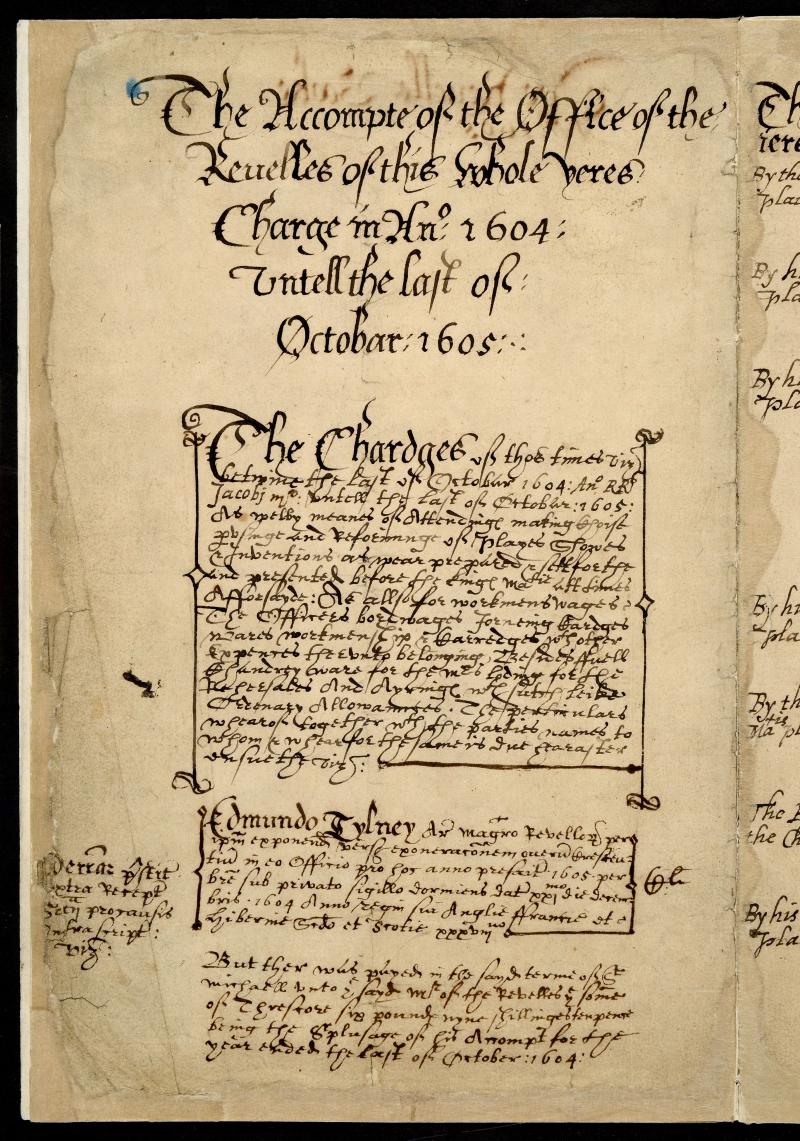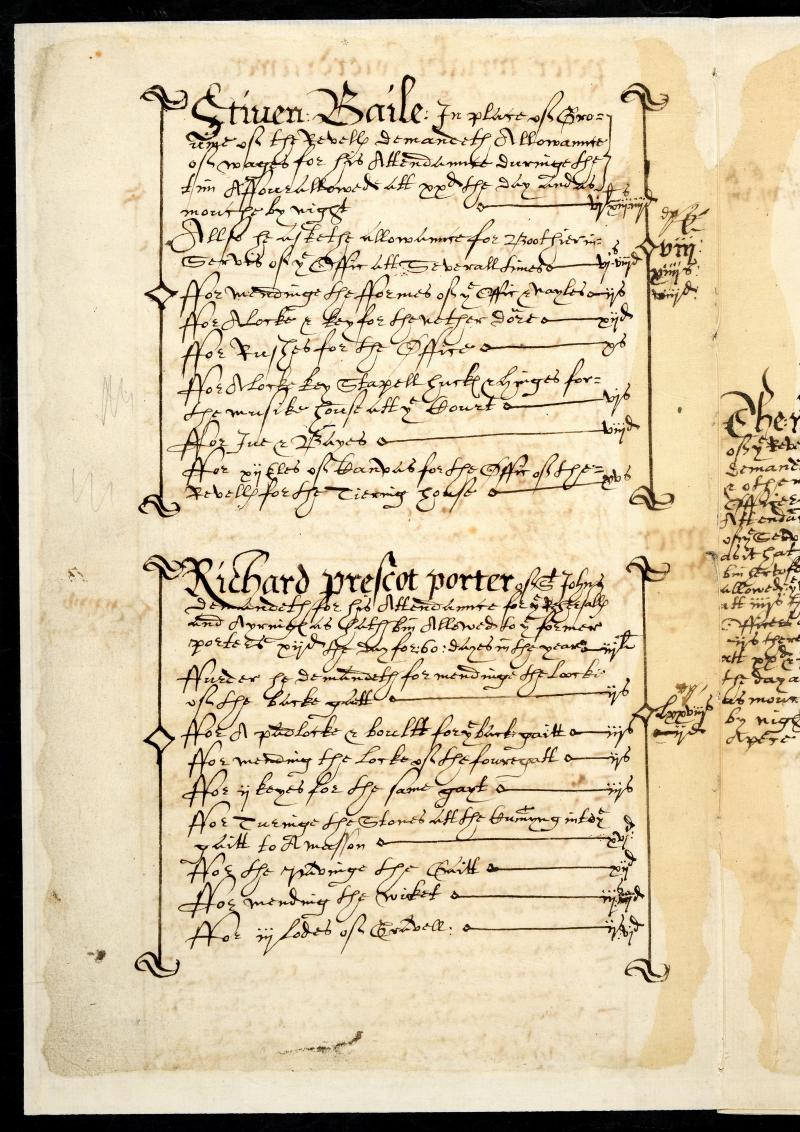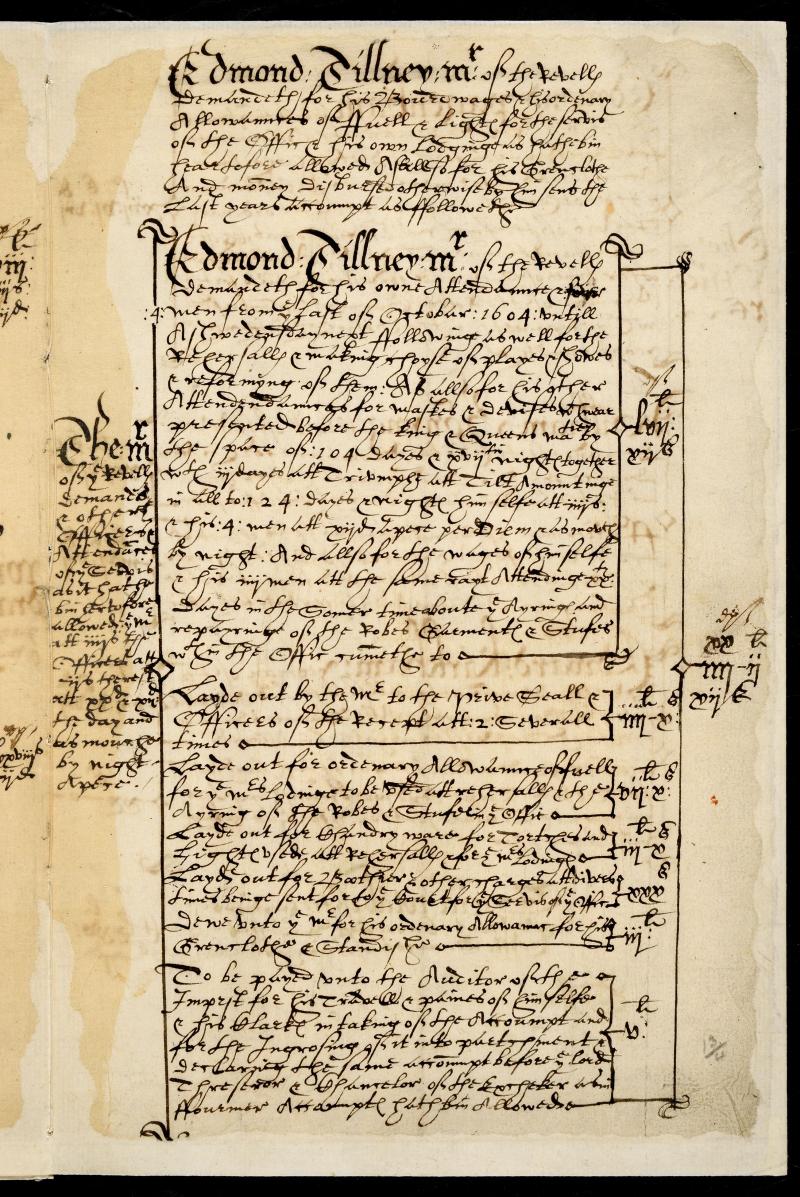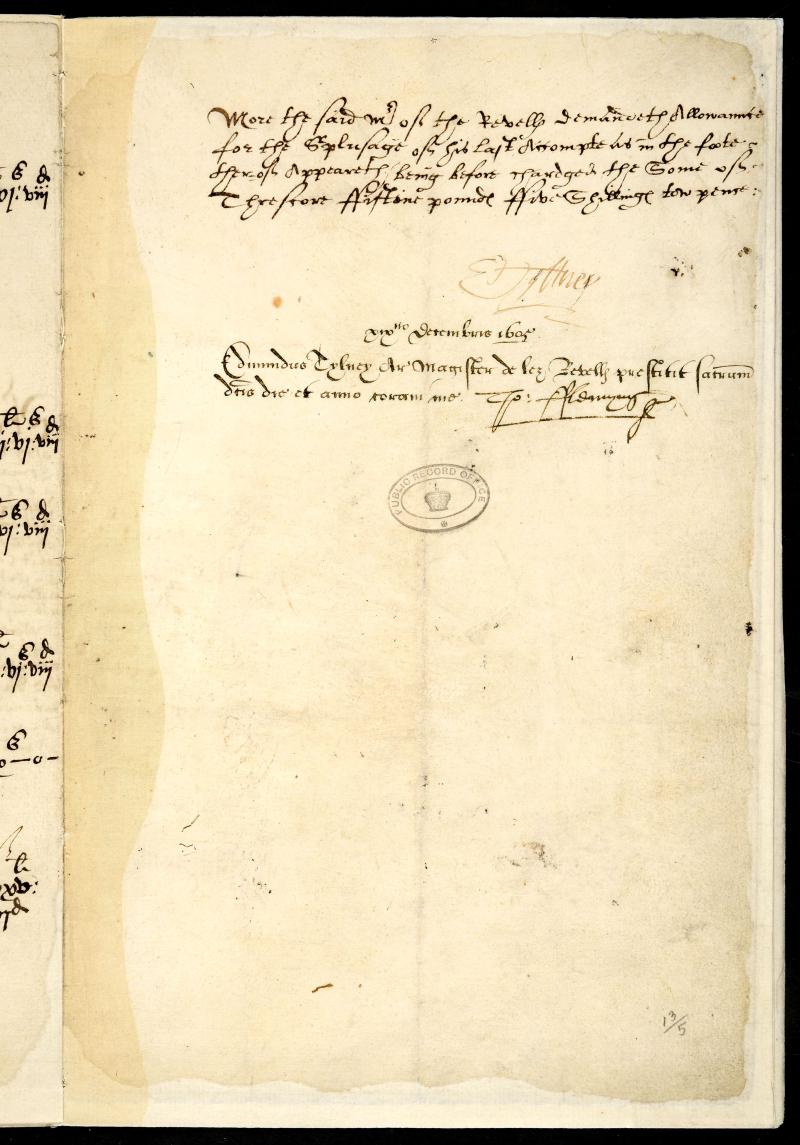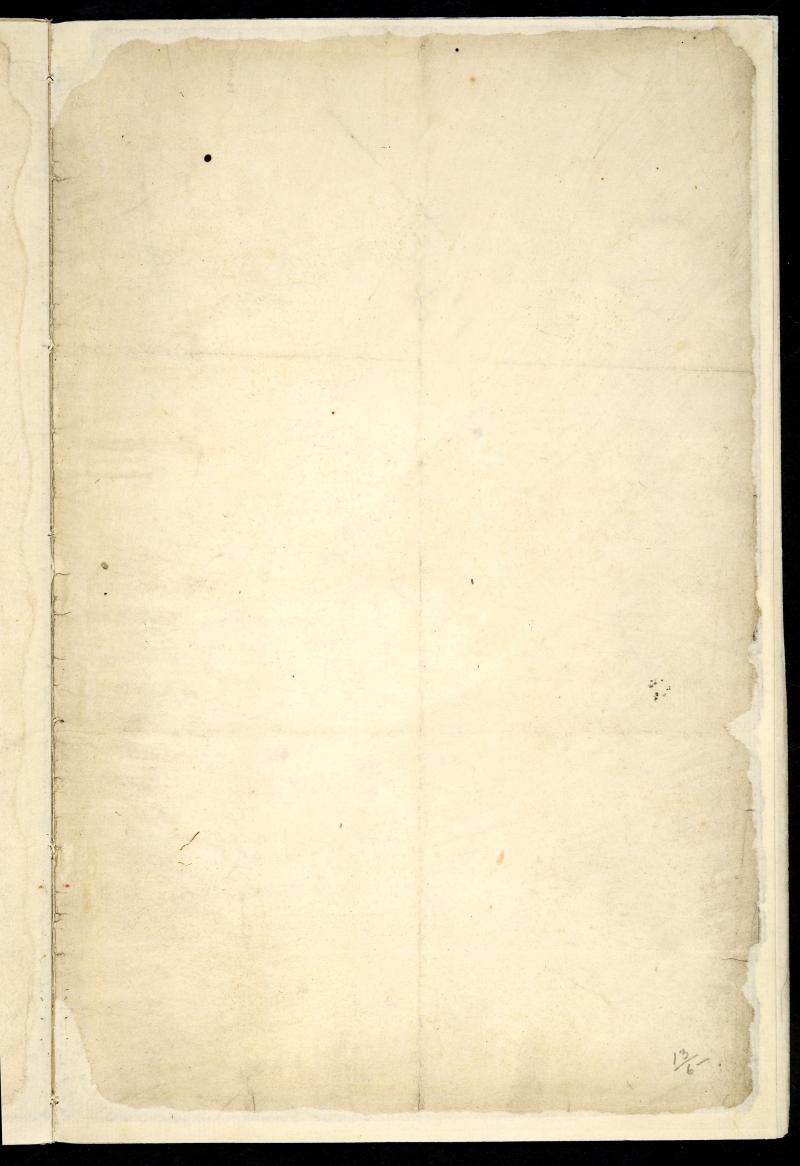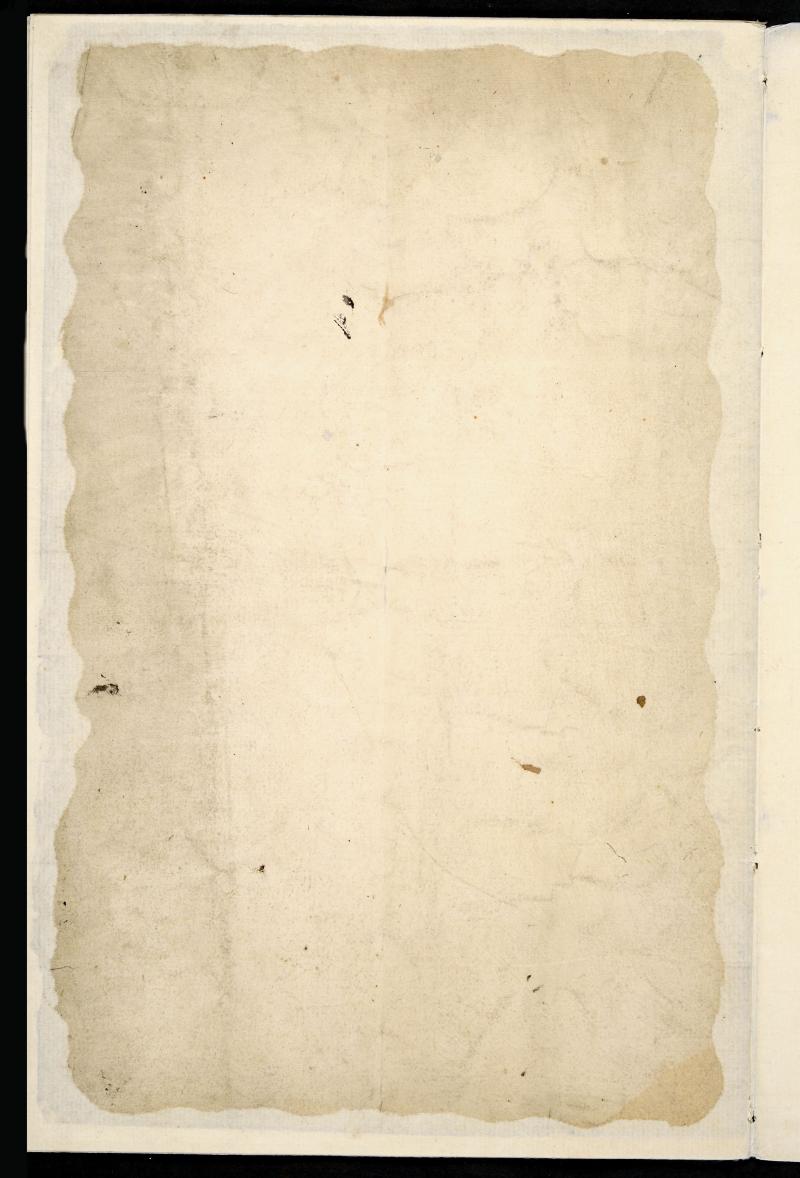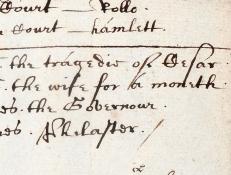Images reproduced by permission of The National Archives, London, England.
Terms of use
The National Archives give no warranty as to the accuracy, completeness or fitness for the purpose of the information provided.
Images may be used only for purposes of research, private study or education. Applications for any other use should be made to The National Archives Image Library, Kew, Richmond, Surrey TW9 4DU, Tel: 020 8392 5225 Fax: 020 8392 5266.
Document-specific information
Creator: Edmund Tylney
Title: Accounts etc. Parts 13 to 33: Part 13 is the account of Edmund Tylney for the year 1 November 1604 to 31 October 1605, appending a list of plays performed at Court which includes seven by Shakespeare.
Date: 1604-1605
Repository: The National Archives, Kew, UK
Call number and opening: AO 3/908/13
View online bibliographic record
Alan H. Nelson, "Account of Edmund Tylney, Master of the Revels, listing plays performed for the year 1604–5," Shakespeare Documented, https://doi.org/10.37078/385.
The National Archives, AO 3/908/13. See Shakespeare Documented, https://doi.org/10.37078/385.
The Revels Book of 1604–5 shows William Shakespeare at or near the height of his success as a playwright, with seven plays and eight performances at court. Merchant of Venice was so admired by the king that he commanded a repeat performance. This was also a year of high success for Shakespeare’s company, which would have reaped £100 for its 10 performances at £10 per play.
In the closing months of 1605 Edmund Tylney, Master of the Revels since 1579, submitted his accounts for the 1604–5 financial year. While most Revels accounts survive only as summaries reported in annual Exchequer rolls, original books survive for 1604–5, shown here, in addition to two others (from 1611–12 and 1636–7). This 1604–5 book is in the hand of William Honnyng, clerk of the Revels.
Two pages of the 10-page 1604–5 Revels book contain a table in three columns. The first column records playing companies, the second records play titles, dates, and venues, and the third records “The poets which mayd the plaies.” Tylney reported, over his signature, a total of 15 court performances, including two masques with music. (A 16th performance, which was to have been a play, was “discharged.”) The 13 remaining performances were all plays, one attributed to (Thomas) Heywood, one to (George) Chapman, and four to (William) “Shaxberd” In the first column are noted ten performances by “the Kings Maiesties plaiers” or “his Maiesties plaiers,” and one performance each by the Queen’s players and the “Boyes of the Chapell.”
Plays expressly attributed to “Shaxberd” are “Mesur for Mesur,” “The Plaie of Errors,” and “The Marchant of Venis” (two performances, the second “Againe Commanded By the Kings Maiestie”). Plays by Shakespeare but not attributed to him are "the Moor of Venis" (i.e., Othello), “the Merry wiues of Winsor,” “Loues Labours Lost,” and “Henry the fift.”
Other entries in the same accounts provide a similar wealth of information, to wit, a reference to Thomas Heywood’s How to Learn a Lady to Woo:
By the Queens Maiesties plaiers: A plaie Caled How to Larne of a wooman to wooe: Hewood
And a reference to George Chapman’s All-Fools:
The Boyes of the Chapell: A playe Cauled All-Foulles: By George Chapman
Two more plays performed by “his Maiesties plaiers,” though unattributed in the third column, are known to have been the work of Ben Jonson: “Euery on out of his Vmor” and “Euery one In his Vmor.” Finally, one play performed by “his Maiesties plaiers,” again unattributed, is the anonymous “A Tragidie of The Spanishe Maz[e].”
“Shaxberd” may seem an odd way to spell the playwright’s name, but Honnyng practiced a distinctive orthography (or system of spelling): he wrote “Newers” for “New Years,” “Maz” for “Maze,” “Lucrc” for “Lucrece,” and “Duck” for “Duke.” Clearly, his spelling was phonetic rather than conventional. That his spelling was considered defective in his own time is revealed by Sir George Buc’s corrections in the 1611–12 Revels Book.
The first two Revels Office books document the changing fortunes of plays and playwrights from 1604–5 to 1611–12. Eight of thirteen performances in 1604–5 were of plays by Shakespeare (counting both performances of Merchant of Venice), while two were of plays by Jonson. In 1611–12, two plays were by Shakespeare, none by Jonson. In the earlier season plays were selected from the whole of Shakespeare’s career (including The Comedy of Errors, from 1594 or earlier); for 1611–12, only new plays were selected. The differences correspond to the fact that in 1604–5 King James, his family, and many members of his court, were unfamiliar with London plays, and thus could be entertained with old fare; by 1611–12, however, only new plays could expect a favorable reception.
Written by Alan H. Nelson
Sources
Edmund K. Chambers, William Shakespeare: A Study of Facts and Problems, vol. 2, (Oxford: Clarendon Press, 1930), 331-332.
A. E. Stamp, The Disputed Revels Accounts (Ocford: Oxford University Press, 1930).
Samuel Schoenbaum, William Shakespeare: A Documentary Life (1975), 200-1.
David Thomas, Shakespeare in the Public Records (London: H.M.S.O, 1985), 16-19.
W.R. Streitberger, ed., “Jacobean and Caroline Revels Accounts, 1603-1642,” Malone Society Collections 13 (Oxford: Oxford University Press, 1986).
N.W. Bawcutt, ed., The control and censorship of Caroline drama: the records of Sir Henry Herbert, Master of the Revels, 1623-73 (Oxford: Clarendon Press, 1996).
Last updated February 1, 2020


